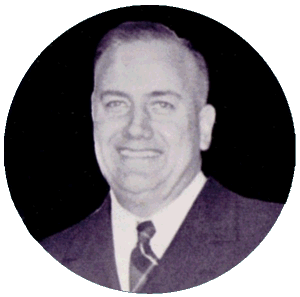
Thomas Charles Poulter (1897 - 1978)
Education
- 1923
- B.S., Physics, Iowa Wesleyan College
- 1933
- Ph.D., Physics, University of Chicago - Epoxy Acids from Oleic and Elaidic Acids
Positions
- 1937 - 1948
- Scientific Director, Armour Research Institute
- Research Professor of Physics, Armour Institute of Technology
Biography
Thomas 'Doc" Poulter completed his education at Iowa Wesleyan College, where
he because Professor of physics in 1935. While at Iowa Wesleyan, Poulter
hired James van Allen as a student to work on preparing seismic and magnetic
equipment for the Antarctic Expedition.
Poulter joined the Armour Research Institute in 1937, after his first
Antarctic expedition to the South Pole. His research focused on seismology
and Geophysics. He was second in command on the Second Byrd Antarctic
Mission to the South Pole. The Poulter Glacier was named after him during
this mission. He was also credited with rescuing Admiral Byrd from carbon
monoxide poisoning.
While at Armounr Institute, he developed the
Antarctic Snow
Cruiser for use in his second expedition with Admiral Byrd.[1,2] The device
generally failed to work as was hoped, due to low friction between the
tread-less tires and the snow. The only way it would traverse the snow
and ice was in reverse. It was eventually abandoned in Antarctica.
In 1948 Dr. Poulter joined the Stanford Research Institute. There he
performed research relating to explosives, weather, and Biosonar. After
visiting the Elephant Seal colony at Ano Nuevo Island off the coast of
California, he became interested in seals. He began studying the seals at
the Island in 1962 and was instrumental in having the island declared as a
biological preserve in 1967. Poulter Laboratory at Stanford Research
Institute is named after him.
Thomas Poulter was awarded 2 Congressional Medals of Honor.
Notable Publications
-
"The Study of Extreme Pressures and their Importance in the Investigation
of Engineering Problems", T.C. Poulter, Journal of Applied Physics
9, 307 (1938).
-
"Seismic Measurements on the Ross Ice Shelf Part I", T.C. Poulter,
Transactions, American Geophysical Union, 162-170 (1947).
-
"Seismic Measurements on the Ross Ice Shelf Part II", T.C. Poulter,
Transactions, American Geophysical Union, 367-384 (1947).
-
"Some Acoustical Phenomena in the Antarctic", Journal of the
Acoustical Society of America 12, 474 (1941).
-
"Design for a Vehicle or Similar
Article", T.C. Poulter, U.S. Patent 119,827 (1940).
-
"Method and Apparatus for Casting
Metal", T.C. Poulter, U.S. Patent 2,379,401 (1945).
References
- [1] A listing of the entire
IIT Collection on the Snow Cruiser
- [2] Project 1-69,
Armour Institute of Technology Research Foundation.
